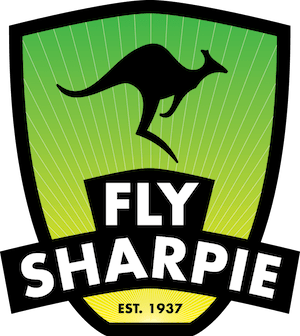BY ALEX BLACKER
My Sharpie journey began in 2018 on SA879, which I named ‘The Trippa Snippa’. I spent a few years getting my head around the boat and always gained a lot of knowledge from these write-ups by past national champions and also by constantly asking questions in the boat park. The class has been so welcoming to me since the day I bought my first boat and I think the fact that everyone so willingly shares knowledge is such a valuable thing that a lot of other classes don’t have.
I wanted to use this article as an opportunity to give you an insight into our campaign last season, including our boat preparation and planning, how we set up our season and our training, as well as what we did differently because the event was on the Derwent.
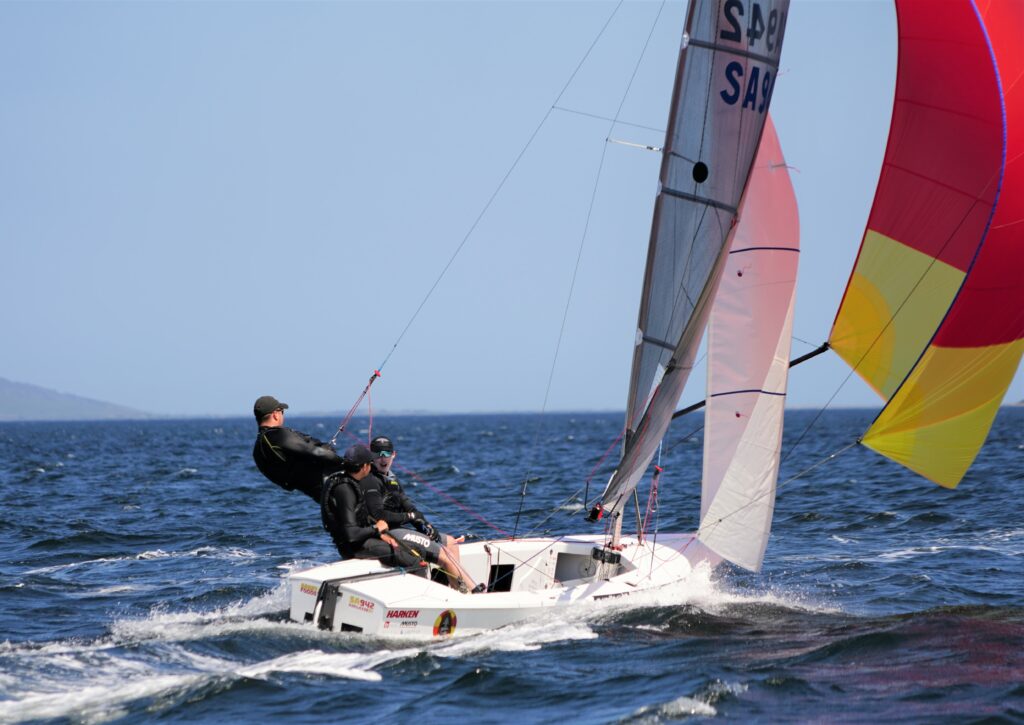
First of all, the boat.
The new boat that we launched just before the Canberra nationals was a big step for us, which really helped take us from knocking on the door of the top of the fleet to regularly challenging for race wins. Setting up a new platform from scratch with Yacht Lab allowed me to do all the things I’ve always wanted when it came to boat fit out. However with that being said, so many of the things I talk about in this review can also be implemented on older hulls. The set up of Sassy is pretty much a stock standard Sharpie, however with a few systems that I’ve designed myself to keep things neat in the boat. The boat was predominantly a Harken fit out with a mix of Stic-It Soft Pad eyes and soft shackle fixings.
When it comes to setting up a fast Sharpie, I’m a strong believer in ensuring the first thing you do is get all the foundation components perfect. First thing is squaring your centreboard by lifting your boat up from the roof or putting it on trestles and pushing your board all the way down. Then picking an identical spot on both sides of your chines by measuring back from your bow and marking each side. You then measure from the tip of the board to each mark to see if the board is even in the middle. It quite often is out, so you pack the case with tape until both measurements are spot on and the board is snug in the case. Then while the boat is still hanging there, shoot a laser up the back of the boat so it lines up perfectly with the centreboard, and then mark the transom so you can square up your rudder gudgeons as well.

The next step is to get the mast step perfectly level on the boat. If this is off, then your mast will bend sideways, and even after you try and correct it with lowers it will still flick the top off to one side. To do this I level the rudder gudgeons so they are perfectly vertical and then sight the step on the boat. If it’s not dead flat you can either sand the gelcoat till it’s corrected or make a wedge for the mast step to sit on. After all this is done and the mast is sitting naturally straight under rig tension you finish off by tuning the lowers. The best way to do this is to gently squeeze them on and check that the mast is bending straight, if not then there should be a lashing or adjustment somewhere in the system to even up the lowers.
Obviously a big part of our success was the crew.
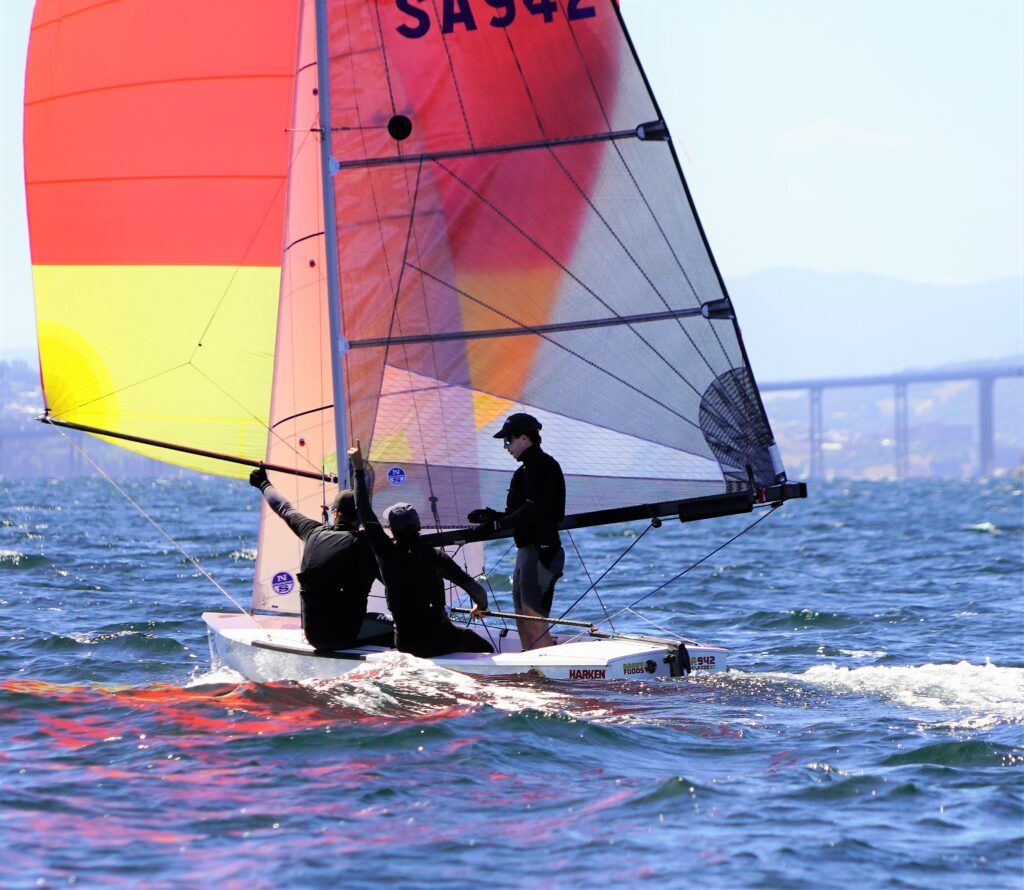
I have had Harry Fisher up the front since early 2019. He jumped on board when I was pretty fresh in the class and brought a lot of Sharpie experience with him when it came to boat handling and how three people can work best together as a team. I came to Sharpies from F18 cats so my helming style, especially downwind, was a bit loose. Harry knows the Sharpie so well and has a really good feel for what’s fast, which was a huge help to getting me up towards the front of the fleet. He works incredibly hard and is definitely a big-game player, saving his best for when we get to a nationals. For those who haven’t had the pleasure to meet him, do yourself a favour. He is a legend of the class and has competed in 14 Sharpie nationals over 17 years, starting when he was just 14 years old.
Sean Keen joined as our sheet hand in early 2022 just after the Canberra nationals and made an instant impact. Like Harry, Sean has done a lot of Sharpie sailing having been part of a couple of quite successful teams in the past. I’ve found that the best sheet hands all offer something different, and as a skipper it’s really important to find someone that suits your sailing style and works in sync with you on the way you want to drive the boat. Sean adds a lot of tactical knowledge regarding race, fleet and regatta management, as well as a lot of skill when it comes to sheeting in a way that allows me to sail the right groove at the right time. Sean having these skills allows me to focus on boat speed and set up, and also on just putting the boat through the water quickly. Sean also brings a lot of intensity with him which keeps the morale in the boat high and calms us down in high-pressure situations.
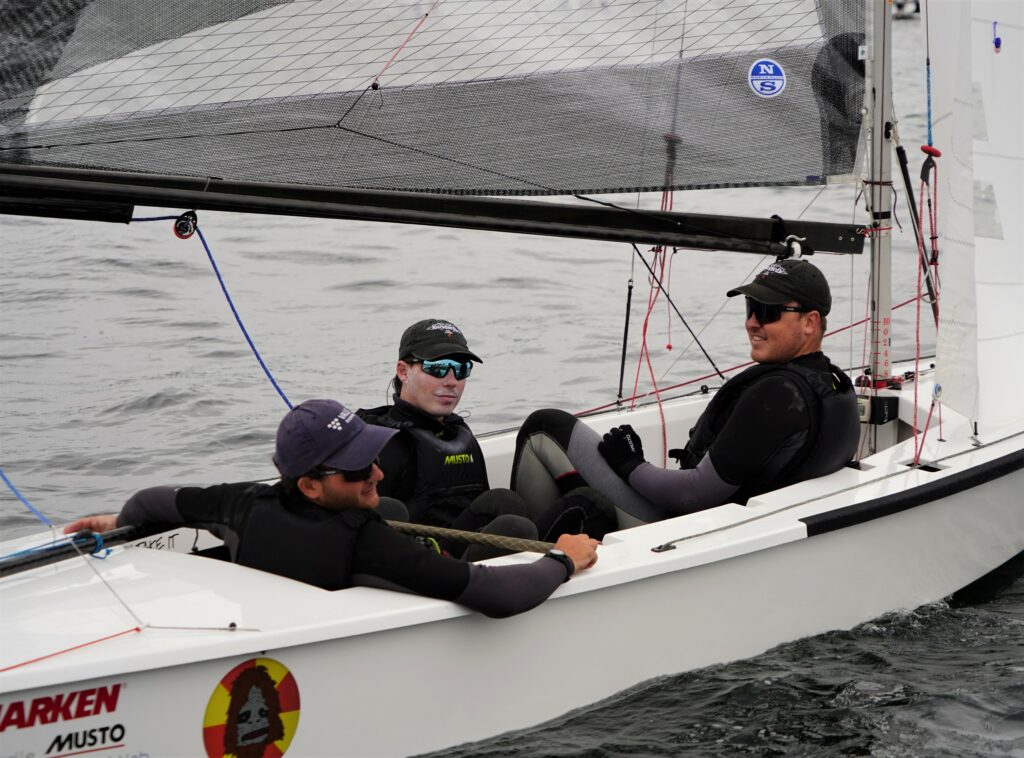
When it came to setting up on the water, we did a lot of work throughout the season to find out what rig settings really worked for us. We worked through a range from 25’8” at bolt upright, back to 24’10” which was rarely used. Hobart was a light event, so we spent 98% of the time in our most upright setting, and were able to use that as a pretty solid base to work from.
Throughout the season we spent a lot of time playing around with our spreaders. We knew the standard setting for our boat and sails but we wanted to get the absolute most out of it that we could, so we started playing around with different pokes. Everything from 12mm of pre-bend through to 35mm of pre-bend and eventually narrowed it down to 187mm of poke being the perfect set up that gave us 26mm of prebend. But the biggest thing was that it taught us was how the rig responded to the different poke measurements and gave us a wealth of knowledge on what to look for and how to fix certain things depending on the conditions.
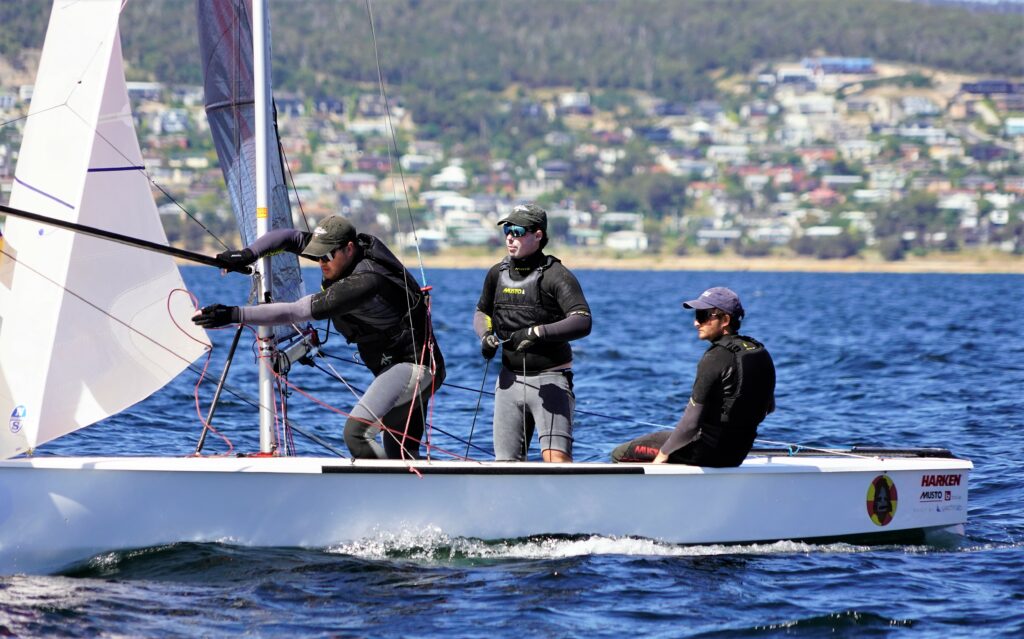
Our settings were pretty much “one turn back” in less than five knots, spreader lengths at 410mm up until about about 18 knots of breeze, depending on conditions, and then in one hole to 400mm in length when it was windy. For those that aren’t aware of the spreader measurements, spreader length is taken by measuring along the back edge of the spreader from where it intercepts the mast to the centre of the side stay wire. And spreader poke is measured by placing a straight edge against your side stays and measuring to the back edge of the sail track from the middle of that straight edge. Also be sure to note that poke changes vary from boat to boat as each Sharpie can change where the side stays go through the deck – so find what works for you. Also be sure to sight the side stays from side on and make sure they line up after all this is done. If not, you’ll need to adjust one spreader until they do and re-measure your poke.
Our sail package was made up of North main and jib, and a John Clifton spinnaker. I’m a huge fan of the North working gear, I find the main very responsive to controls and sheet tension, which has been huge for when we are changing gears. It knuckles up really nicely for when you’re chasing power, and it flattens off and opens up nicely for the really light stuff and the windy conditions. The jib is fairly deep but is super responsive to sheet tension and opens up nicely when the breeze picks up. It’s a really nice sail to drive to and has some wicked grooves as well. The Cliffo kite was a preference for Harry as it’s what he’s always used, but we also found it suited us best when square running in marginal conditions.

Through our nationals I had a lot of people come up to me and ask how we managed to make the boat go so high and fast. This was most implemented by spending hours and hours of two-boat tuning with our training partner Mark Soulsby and his team, going through all our settings and trying out different things. We had everything marked so we could always refer back to it with each other after sailing or while on the water during practice sessions. Once we had everything just about dialled we would just focus on sailing in a straight line and trying to get the edge on each other, working as hard as we could as a team to keep the boat in the best groove possible. For the race days we would always meet out on the course earlier and tune up to make sure our boats were both at full potential. Even on the last day in Hobart when either team could have won, we still lined up to make sure each other was on the pace.
I find the best way to establish a successful campaign is all about consistency. This goes from all the minor details like from the time you get to the yacht club, to when you get changed and get on the water, to the process when you count yourself into a maneuver, or even the way you approach a start line. This helps everyone stay on the same page at all times and for everything to become second nature a lot sooner. This will start to work its way onto the score sheet and then the results will follow.
I hope this has helped you as much as the previous de-briefs have helped me. I’ve tried to come at it from a different angle for information that very often gets left out but is extremely important. If you ever have any questions please don’t hesitate to find me in the boat park, or in the bar.
